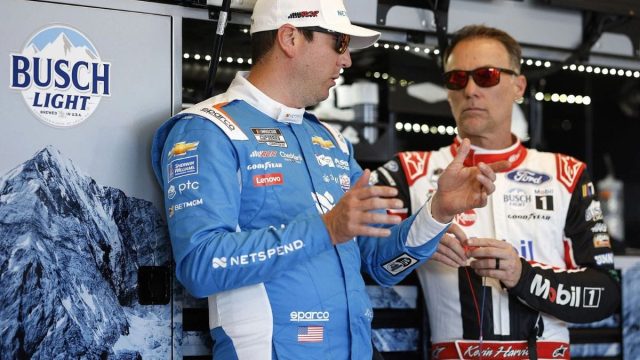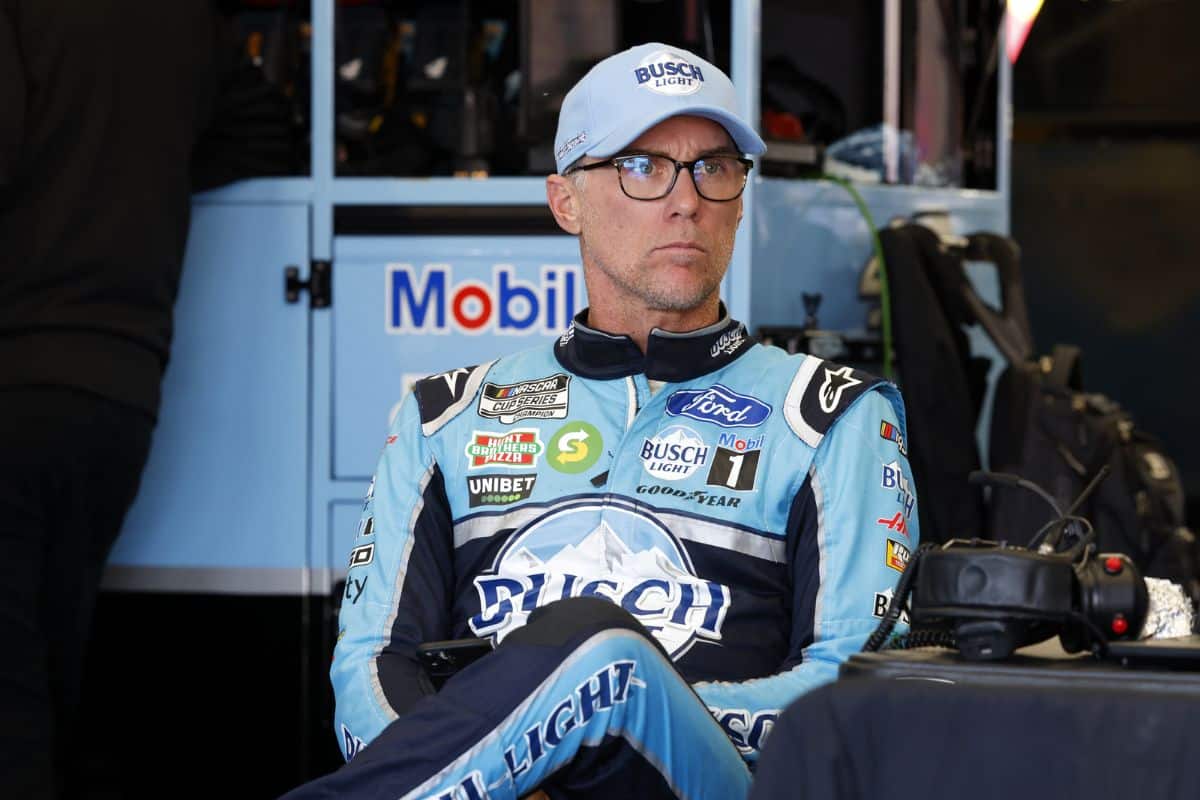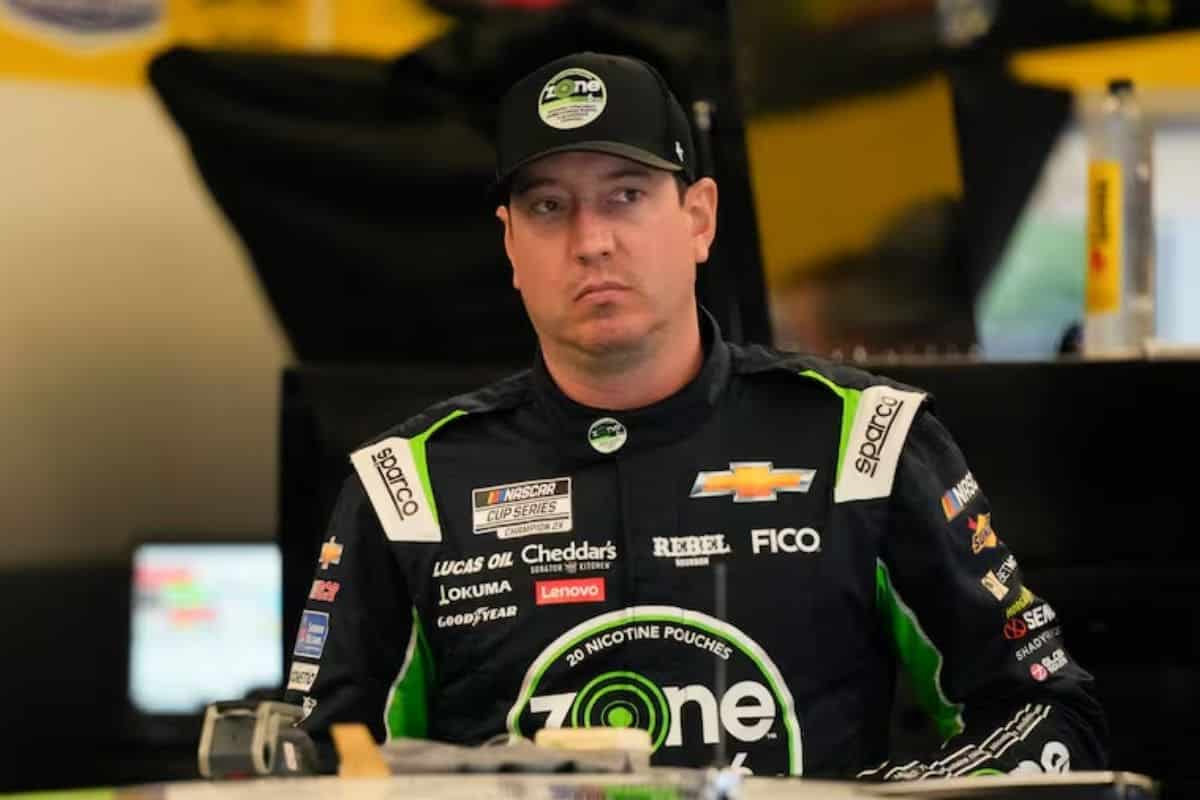Kevin Harvick Breaks Down NASCAR’s Controversial Move: Kevin Harvick’s analysis of NASCAR’s controversial decision concerning Kyle Busch offers a detailed perspective on the organization’s safety protocols during races. Harvick clarifies the importance of controlled deceleration and responsible driving under caution, signifying safety over competitive gains. This strategic move, allowing Busch to reclaim his position, shows NASCAR’s dedication to reducing risk and avoiding unnecessary crash. However, this decision has sparked varied reactions, particularly from 23XI’s owner-racer, raising questions about its broader implications on race dynamics and driver strategy.
Key Highlights
- Harvick explains NASCAR’s decision to prioritize safety by allowing Busch to regain position due to responsible deceleration.
- NASCAR’s rule aims to prevent reckless driving and excessive speeding through wrecks under caution.
- The rule emphasizes controlled deceleration near wrecks to enhance safety and reduce collision risks.
- Harvick clarifies that the rule is designed to deter avoidable car collisions and maintain safety.
- Busch’s incident aligned with NASCAR’s safety objectives, highlighting the importance of the rule in such scenarios.
Nashville Race Overview
The Nashville race, marked by its unusually high moisture levels and unpredictable track circumstances, set the stage for one of the most controversial weekends in NASCAR’s Cup schedule. Initially, the race seemed to promise a straightforward competition, with drivers maintaining a steady tempo on the track. However, as humidity levels rose, the track conditions worsened, leading to a series of unforeseen challenges.
The latter part of the race witnessed a cascade of cautions, each more puzzling than the previous. The increased dampness on the track compounded the challenge for drivers, resulting in a series of minor accidents and spin-outs. This unpredictable setting demanded a high level of adaptability and strategic foresight from the teams. The frequent interruptions disrupted race strategies, forcing crews to reassess their approaches on the fly.
One of the most significant incidents involved Kyle Busch, who had been performing commendably until a caution period threatened to disrupt his momentum. Despite the adverse conditions, NASCAR officials controversially allowed Busch to continue under green flag conditions. This decision was met with immediate criticism from other competitors and analysts, who questioned the consistency and fairness of the ruling.
Kevin Harvick Explains NASCAR’s Decision
Amid the escalating debate over the controversial decision at Nashville, Kevin Harvick provided an in-depth explanation of NASCAR’s rule enforcement during his recent ‘Kevin Harvick’s Happy Hour’ episode. Harvick analyzed the rationale behind NASCAR’s handling of Kyle Busch’s incident during the Ally 400, where Busch regained his position after a crash, sparking a wave of scrutiny.
“The reason that they want the rule this way is that they don’t want people speeding through the wrecks under caution. So if you have to slow down like Kyle Busch did to keep from continuously hitting the car in front of him…was dead sideways in front of him. He didn’t stop. He went up, scrubbed the wall, slowed down…So he just slowed down and they gave him his spot back.” – (harvick)
Harvick elucidated that NASCAR’s intent was to discourage reckless driving through wrecks under caution. He emphasized that Busch’s actions adhered to NASCAR’s safety protocols, which prioritize controlled deceleration over aggressive actions. Harvick’s analysis revolved around three core points:
Busch’s decision to slow down and brush the wall was in line with the rules, as he avoided a more severe accident by not attempting to speed past the wreckage. By sticking to safety measures, Busch was entitled to regain his position since his deceleration was a direct result of the on-track incident, not a tactical move to gain advantage.
He further clarified that Busch’s actions were justified because he avoided causing additional chaos by slowing down responsibly. This detailed interpretation highlights NASCAR’s commitment to balancing competitive fairness with driver safety.
KYLE LARSON INTO ROSS CHASTAIN.
DOUBLE OVERTIME AT NASHVILLE. #NASCAR
📺 : USA Network and NBC Sports App pic.twitter.com/EQedOv7WXl
— NASCAR on NBC (@NASCARonNBC) July 1, 2024
Harvick’s Perspective on the Rule
Despite recognizing the complexity of the rule, Kevin Harvick provided a thorough analysis of why the regulation is crafted to prioritize safety over a competitive edge. He explained that the rule, although appearing puzzling, plays a crucial role in upholding on-track safety. Harvick stressed that the rule deters drivers from maintaining excessive speeds when approaching a wreck, thereby reducing the risk of additional collisions and unnecessary damage.
Harvick’s viewpoint demonstrates a detailed understanding of the regulation’s intent. He remarked, “It’s kind of a strange rule. But the reason they don’t worry about you slowing down is because they don’t want people driving through that wreck faster than they need to and hitting cars unnecessarily.” This statement highlights the safety considerations that form the basis of the rule, even if it may seem counterintuitive from a competitive perspective.
In the end, Harvick concluded that while the incident involving Kyle Busch was unconventional, it was not necessarily an inaccurate application of the rule according to its current interpretation. He acknowledged Busch’s self-restraint, indicating that despite sparking discussions, it aligned with the overarching objective of promoting safety.
“So, weird scenario, but I’m not 100% sure that that was the wrong call…based on the current rule.” – (harvick)
Reactions from Denny Hamlin
23XI owner-racer Denny Hamlin expressed his frustration over the prolonged caution period during the Nashville race, highlighting the heightened emotions and competitive tensions that defined the event’s closing laps. Hamlin’s primary grievance stemmed from the extended caution, which he felt disrupted the race’s natural flow and increased the stress on drivers competing for victory. His irritation was noticeable, especially as he navigated the intense competition with Kyle Larson and Ross Chastain.
Hamlin articulated his concerns on his podcast, ‘Actions Detrimental,’ stating, “At the moment, I’m upset because we’re taking forever under caution.” This comment emphasizes the broader sentiment among drivers who are often left grappling with the implications of prolonged caution periods.
In contrast, 23XI driver Tyler Reddick offered a more balanced perspective. Reddick acknowledged the complications but admitted benefiting from the situation. Reddick explained, adding that he couldn’t be overly critical given the personal advantage he gained.
“I was fighting my own battle to get back where me and my team believed that I was before the caution. And I saw the eight go by, right side’s ripped off of it and they gave him his spot back in the honor of consistency, I guess. I benefitted from it, so I guess I personally can’t really be too upset about it.” – (Reddick)
Impact on Kyle Busch
Kyle Busch’s involvement in the controversial event not only highlighted the volatile nature of racing but also showed the resilience and potential of the No. 8 Chevy team despite the unfortunate crash with Kyle Larson. This incident, occurring after NASCAR’s controversial intervention, shows the unpredictable dynamics of the sport and Busch’s enduring competitiveness.
Analyzing the impact on Kyle Busch, it’s evident that the wreck was a significant setback, yet it also served as a tribute to the underlying strength and pace of the No. 8 Chevy. Prior to the collision, Busch’s performance displayed a remarkable resurgence, suggesting that the team has made substantial progress in addressing previous performance issues. The lap times and agility demonstrated by Busch indicated that the No. 8 Chevy is on the verge of breaking his recent streak of lackluster finishes.
Despite the immediate disappointment of the incident, Busch’s ability to extract performance from the car in such challenging conditions speaks volumes about his skill and the team’s technical expertise. This resilience is vital as it reflects a potential turning point for Busch, who has been working diligently to regain his form and reassert his dominance in the NASCAR circuit.
News in Brief: Kevin Harvick Breaks Down NASCAR’s Controversial Move
NASCAR’s decision regarding Kyle Busch highlights the organization’s strong dedication to safety through controlled slowing down and responsible driving under caution. Kevin Harvick’s explanation of this controversial move emphasizes the importance placed on the well-being of drivers over competitive advantages.
The policy aims to reduce risks of reckless driving and possible collisions, thereby promoting a safe racing environment. This incident serves as a proof of NASCAR’s commitment to maintaining safety standards in professional racing.
ALSO READ: Kevin Harvick Reveals Broken Ribs Mishap to Comfort Joe Gibbs



